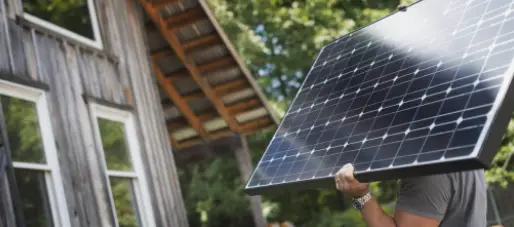
In this easy-to-read guide, we’ll discuss some advantages and disadvantages in making your project come to life and the steps needing to be taken before, during, and after you build the ultimate DIY solar panel setup.
There’s no one simple DIY setup that’s perfect for everyone-- it depends on the type of solar system, how much power you’ll need, what kind of a budget you have, and other factors.
Power is a big factor when it comes to the setup that you’re wanting. If you don’t know how much power you’ll need for your solar system, and you’re wanting to find out, check out our blog, “How Much Solar Power Do I Need for My RV?” as it discusses all of the items that run on different voltages and Wattages.
At Sunvival Guide, we want you to save your valuable time by avoiding researching every single item separately. In this guide, we’ve laid everything out for you- plain and simple. Let’s go through it!
ADVANTAGES
Solar energy, ever since the early 2000’s, has grown dramatically within consumer households. Going green with solar can help you save or, in extreme situations, cut off your entire utility bill. With this being said, there’s a lot of advantages that come with DIY solar setups.
Affordability- Installing solar systems can get very expensive, and we get that, but by reducing the labor costs, you can cut down on thousands of dollars by installing the project yourself, especially if you’re planning on going big and covering your entire electrical usage.
There do come some complications with this, however-- you’ve got to know some basic electrical installation tips. Most of the instructions usually come with the solar panel/kit that you’ll be buying, but by putting in hours of work to get your system up and running, you can avoid paying the equivalent of what it would cost to buy a whole another solar kit.
Personalization- Since you’re the one setting up the solar system, you get to set your own style and scheme up! If you have an idea for a perfect setup in your mind, you get to access the free-range as a do-it-yourself-er by picking the slopes, angles, height, color, style, wiring, and anything else you can think of!
If you’re familiar with solar panel kits, you’ll know that there’s a lot of components to a system which is why it’s important that you have the look and accessibility to the solar kit to your liking. If you’re not familiar with the components and would like to know more about them, check out our article on them, “Core Solar Panel Components,” for all of the specifics!
Training- If you aren’t familiar with solar kits and don’t want to spend thousands of dollars on your house’s setup just to not be able to install anything, you can always buy one solar panel with the parts that you’d like for training purposes!
Most people like to camp or own RVs, so they’ll try to install a smaller solar system on the top of their RV or within their camping site. This is an easier and cheaper way to learn solar setups, the wiring, and the requirements for the components. If you mess up, you’ll have saved a lot of money, and you can always fix the mistakes by learning from them for next time.
DISADVANTAGES
With advantages come some disadvantages, of course. They’ll try to throw you off, but the cons aren’t as bad or as extreme as they seem, so don’t fret! DIY-ing takes some time to learn and get used to, so don’t worry if you aren’t an expert by the end of it.
Risky Electricity- Solar system DIY aren't for first-time electricians-- there’s a lot of dangers that solar installations pose; the first danger being a fire hazard. Cross wires, loose wire connections, wrong fuses, and improper exposure can ignite a small fire or can have a shocking effect.
Even if you know how to handle the wiring and the complicated portion of the solar setups, you still have to install the kit on your roof which involves climbing and working on top of your roof. This can cause the dangers of falling or dropping anything fragile, and most home insurances won’t cover any damage that’s done from a DIY solar panel project, so tread carefully.
Lots of Components- Most people think that solar panel kits only involve the solar panel itself, but the reality is that there’s much more to that than just a panel. Even with comprehensive tutorials, it’s easy to get lost within the inverters, the batteries, the meters, and the wiring.
Even though solar DIY can allow you to make your aesthetic and layout, sometimes creating something new can be like reinventing the wheel-- it’ll only hurt your wallet or waste your time for you to create your own layout and have it not work! If you hire a professional contractor, they can get the job done, but you won’t be able to create your own design.
Legality- While legal issues fly over the heads of most DIY-ers, it’s important to check with your city and the neighborhood’s homeowner association to see if it’s okay to install a solar kit with the local zoning regulators. Depending on the city, county, or the state, there can be some laws or regulations against solar kits without certification.
Material Quality- While this goes for the DIY-ers that are buying their components separately, this is still a disadvantage. While trying to save on money by buying the pieces separately, you won’t be receiving the same quality of materials that professional installers have the access to which could mean less energy and power, shorter lifespans of the kits, or more complications within the installations.
TYPES OF PROJECTS
Grid-Tied
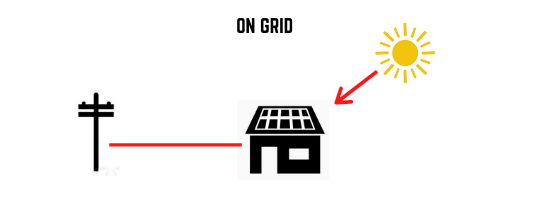
If you’re interested in having a solar system that’s meant to save money and not entirely cut down on utilities, you should be on the lookout for grid-tied systems. This system is designed to save you money but not meant for going completely green.
How it works is you have a smaller amount of solar panels that are needed. While a lot of the electricity is covered by the solar panels, some bigger appliances such as the air conditioning and the heating are covered by the city’s electrical grid. This can still save you a lot of money in the long run but will cost more upfront than an off-grid system will over the long run.
Off-Grid
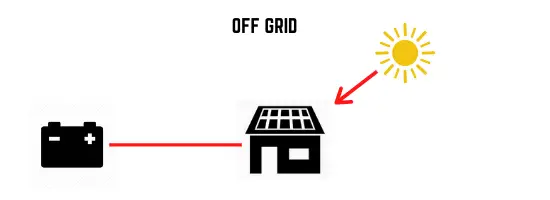
An off-grid solar system focuses completely on the fact that the system will be run without the help of the city’s electrical grid. An off-grid system is meant to run independent of the grid and are usually more expensive than any other types of solar projects out there.
Off-grid installations can cost a lot of money upfront, but overtime, since there isn’t an electrical bill that’s coming to you in the mail, all of that money can be saved up and even used to pay off the solar kit. In the early 2010’s, within my local city, if you were planning on going solar, the rate that your money would start being saved up was around 25-35 years which is a turn-off for a lot of people.
In current days, the average return on investment, or ROI, on solar power is around 7.5 years, meaning that the money that you spent on your solar kit vs. the money that you would’ve spent on your electricity bill will be about the same in 7-and-a-half years, and after that, for the next 20-25 years, you don’t have to pay a single dime for electricity.
Hybrid
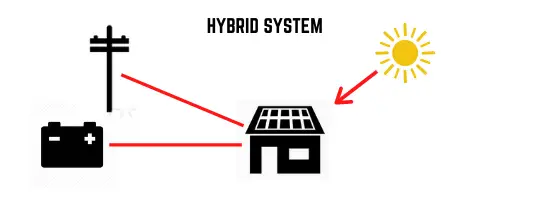
A hybrid solar project is one that has the features of both an off-grid system and a grid-tied system. The expense for this falls right in the middle of the two systems and leads to a lot of good reviews with most buyers.
The whole point of a hybrid system is to rely mostly on solar power to supply power to your house and your appliances from small things like phone chargers and televisions to larger appliances to dishwashers and washers/dryers. The only difference is that if you run out of power, you can quickly switch to using the city’s grid-- that way, you minimize the spending on electricity bills and maximize solar usage.
THE STEPS FOR A DIY SOLAR SYSTEM
Deciding Goals
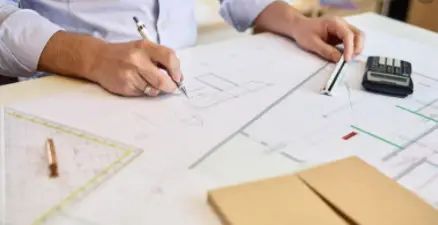
The first thing to do is to outline and draw out a plan that you want to execute. It may seem silly at first, but having goals and an idea to start with can save you time in the long run. A simple sketch on a sheet of paper along with the right tools and equipment needed is a good start.
To help with your planning, you can learn how long it takes to install solar panels here.
Financing/Budgeting
Financing is a big factor with most homeowners since solar systems can leave a hole in the wallet. By making sure that you’ve got enough money saved up to go green, you can save a lot of stress in the future. Solar panels aren’t an impulse buy nor should they be.
Power Usage
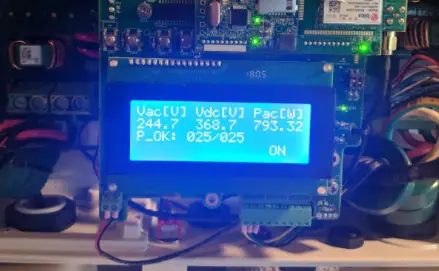
Figuring out how much power you’ll be needing is a big step in the process of installation. For people living by themselves with simple appliances, the number of solar panels needed will be a lot less than those with 6 family members in a 4-bedroom, 3-bathroom house.
By reading our article, “How Much Solar Power Do I Need for My RV?,” you’ll be able to pinpoint how many solar panels and batteries you’ll need for yourself.
Designing a system
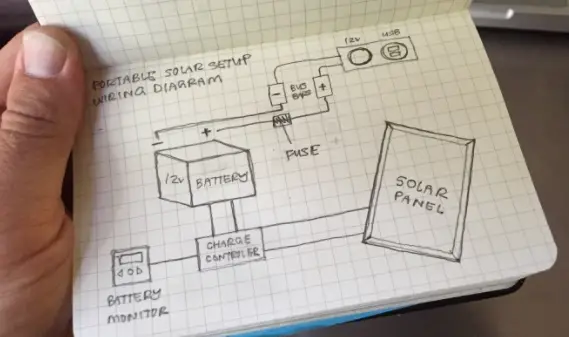
On the sheet of paper where you listed out your goals, you’ll also want to specifically layout the components and by using dimensions, measure out where to fit everything with plenty of clearance room for all of the parts. Since you’ll most likely be climbing the roof, it may not be a bad idea to climb up there beforehand to familiarize yourself with the surroundings.
Rules and Regulations
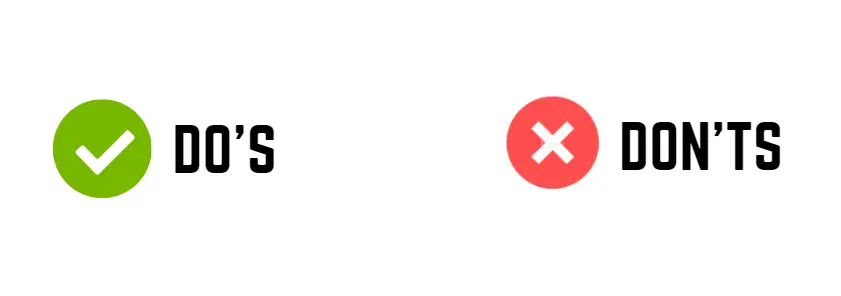
Checking with your local courthouse about any regulations against installing solar panels by yourself isn’t a bad idea since there are some states that don’t allow the installation of solar panels without a certification.
Florida, nicknamed the “Sunny” state, has some laws and regulations against installations-- same with Alabama and Georgia, so make sure you check out the laws before buying!
Final Evaluations

After running through all of the steps carefully, you’ll want to re-run through all of the steps to make sure you didn’t mess any crucial things because after this, you’ll be buying a solar kit- exciting!
Some important things to watch for would be with measurements and making sure that the amount of power that your solar kit will produce will match what you want it to- somethings that will help will be reading the warranties and reviews offered by the company.
Picking the Right Solar Kit
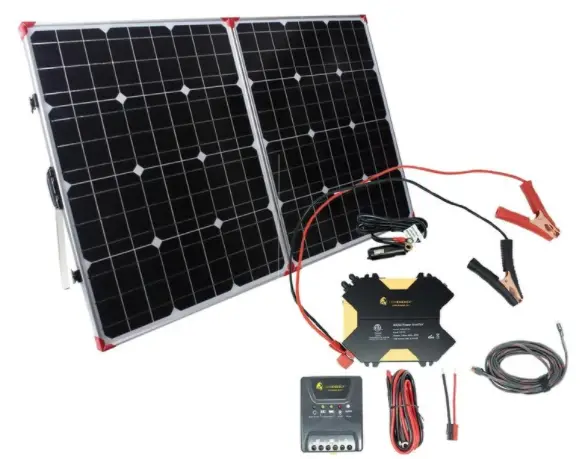
Now’s the time to buy! Pick out the right solar kit with all of the equipment that you want-- some things you’ll have to buy later; with other things, you can buy them right now.
Make sure the solar kit has the solar panels in there along with the appropriate wiring, tools, charge controller, battery, and inverters. If not, you’ll have to buy them separately.
We have created bunch guides you can check out below:
- Best Solar Panels
- Best Solar Generators
- Best Solar Charge Controllers
- Best Solar Inverters
- Best Solar Batteries
Finding the Appropriate Tools
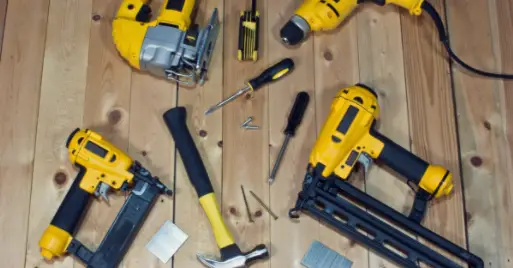
Since you’re installing the solar kit, you’ll want to obtain the appropriate tools to install the solar panels and everything else. Usually, all it takes are basic tools like screwdrivers and wrenches, but you might need a way to haul the solar panels up to the rooftop since they’ll weigh between 35-45 lbs.
With electric tools, make sure that they’re either rechargeable, or you’re going to want to run a long extension cord up to your roof-- neither of the two is more beneficial than the other besides more torque and power.
WRAPPING UP
We hope this blog helped you in finding and planning the perfect solar system DIY for yourself and maybe your family! Save thousands on solar kits by installing the kits yourself, and use the money towards buying more solar panels for the future with all of the money that you saved by switching to solar!
